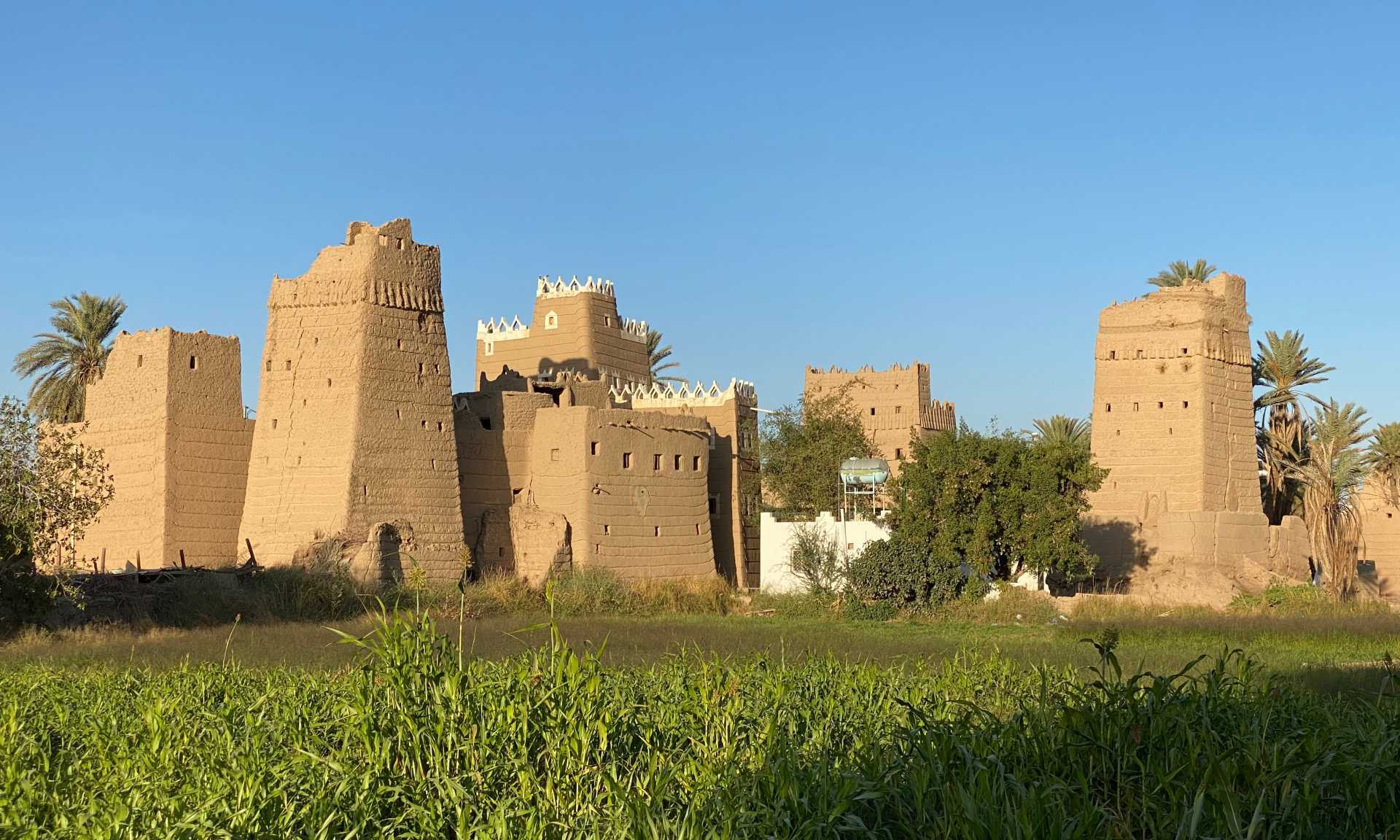
Najran, also known as Aba as-Suud, is a captivating city located in the southwestern region of Saudi Arabia. With a rich history and a vibrant culture, Najran offers a plethora of fascinating facts for both locals and visitors alike. Situated close to the border of Yemen, Najran is known for its strategic location and has played a significant role in the trade routes between the Arabian Peninsula and the southern regions. The city is famous for its ancient ruins, impressive architecture, and unique traditions that have been preserved over centuries.
From its historical sites to its beautiful landscapes, Najran has something for everyone. In this article, we will explore 32 intriguing facts about Najran, shedding light on its past, present, and the attractions that make it a must-visit destination. So, get ready to embark on a virtual journey through the streets of Najran and discover the hidden gems that make this city a true treasure of Saudi Arabia.
Key Takeaways:
- Najran, also known as Aba as-Suud, is a city in Saudi Arabia with a rich cultural heritage, vibrant marketplaces, and stunning architectural marvels, making it a must-visit destination for history and culture enthusiasts.
- Najran’s strategic location, diverse population, and ancient trade routes have shaped it into a crossroads of cultures, blending modernity with tradition and offering a gateway to the ancient civilizations of the Arabian Peninsula.
Facts 1: Rich Cultural Heritage
Najran, also known as Aba as-Suud, is a city in Saudi Arabia renowned for its rich cultural heritage, which dates back thousands of years.
Facts 2: Strategic Location
Najran is strategically located in the southwestern part of Saudi Arabia, near the border with Yemen, making it an important hub for trade and commerce.
Facts 3: Historical Significance
Najran holds great historical significance as it was once a major center for the ancient trade routes, connecting Arabia with the ancient civilizations of Mesopotamia and Egypt.
Facts 4: Architectural Marvels
The city is adorned with impressive architectural marvels, such as the Najran Fort, a magnificent fortress built in the 17th century, and the Al-Ukhdood archaeological site, known for its ancient tombs and structures.
Facts 5: Vibrant Marketplaces
Najran boasts vibrant marketplaces, where visitors can immerse themselves in the local culture and purchase traditional handicrafts, spices, and textiles.
Facts 6: Lush Palm Groves
The city is characterized by lush palm groves, which not only enhance its natural beauty but also serve as a vital source of livelihood for the local population.
Facts 7: Diverse Ethnicity
Najran is home to a diverse population comprising various ethnic groups, including the indigenous Najrani people, as well as immigrants from other regions of Saudi Arabia and neighboring countries.
Facts 8: Unique Cuisine
The Najrani cuisine is known for its unique flavors and traditional dishes, such as Jereesh (a meat and wheat dish) and Aseedah (a sweet dish made from wheat and dates).
Facts 9: Ancient Rock Art
The region around Najran is famous for its ancient rock art, with numerous petroglyphs depicting scenes of daily life, hunting, and religious rituals.
Facts 10: Festivals and Celebrations
Najran hosts vibrant festivals and celebrations throughout the year, showcasing the local traditions, music, dance, and folklore of the region.
Facts 11: Sunbaked Mud Brick Architecture
Najran is renowned for its distinctive sunbaked mud brick architecture, which reflects the traditional building techniques utilized in the region for centuries.
Facts 12: Abundant Natural Beauty
The surrounding landscapes of Najran are blessed with abundant natural beauty, including mountains, valleys, and desert dunes, offering opportunities for hiking, camping, and exploration.
Facts 13: Ancient Trade Hub
Throughout history, Najran served as a vital trade hub, connecting the Arabian Peninsula with other regions, facilitating the exchange of goods, ideas, and cultures.
Facts 14: Center of Agriculture
Najran is a prominent center of agriculture, benefiting from its fertile soil and favorable climate, resulting in the cultivation of various crops, including fruits, vegetables, and grains.
Facts 15: Archaeological Treasures
The region is a treasure trove of archaeological sites, with discoveries revealing ancient civilizations that thrived in the area, leaving behind traces of their remarkable cultures.
Facts 16: Ancient Trade Caravans
Najran has witnessed the passage of ancient trade caravans, carrying valuable goods such as spices, incense, and precious metals, contributing to its economic prosperity.
Facts 17: Crossroads of Cultures
Due to its strategic location, Najran has historically been a crossroads of cultures, where diverse traditions, languages, and religions intermingled, fostering a unique cultural tapestry.
Facts 18: Hospitable Locals
The people of Najran are renowned for their warm hospitality, welcoming visitors with open arms and offering a glimpse into their rich cultural heritage.
Facts 19: Oldest Inhabited Area
Najran is considered one of the oldest inhabited areas in the Arabian Peninsula, with evidence of human habitation dating back thousands of years.
Facts 20: Blend of Modernity and Tradition
While embracing modernity, Najran still cherishes its traditional values and customs, striking a harmonious balance between the past and the present.
Facts 21: Ancient Trade Routes
Najran was a key junction on the ancient trade routes that connected the Arabian Peninsula with the civilizations of the ancient world, fostering cultural and commercial exchange.
Facts 22: Stunning Architectural Details
The buildings in Najran exhibit stunning architectural details, with intricate carvings, geometric patterns, and decorative elements, showcasing the craftsmanship of the local artisans.
Facts 23: Pearls and Jewelry
Najran has a rich history of pearl diving and jewelry making, with skilled artisans creating exquisite pieces adorned with precious gems and metals.
Facts 24: Handwoven Textiles
The city is known for its handwoven textiles, produced by skilled craftsmen using traditional techniques and designs passed down through generations.
Facts 25: Traditional Music and Dance
Najran is alive with traditional music and dance, with local musicians and dancers showcasing their talents during cultural events and festivals.
Facts 26: Date Palms and Agriculture
Najran is famous for its sprawling date palm orchards, which are not only a visual delight but also a source of livelihood for many farmers in the region.
Facts 27: Religious Diversity
Najran is home to a diverse religious community, with followers of Islam, Christianity, and other faiths coexisting peacefully and contributing to the cultural fabric of the city.
Facts 28: Ancient Ruins and Monuments
The surroundings of Najran are dotted with ancient ruins and monuments, offering a glimpse into its storied past and the civilizations that once thrived in the area.
Facts 29: Cultural Preservation Efforts
Najran places great importance on the preservation of its cultural heritage, with ongoing efforts to restore and conserve historical sites, artifacts, and traditional practices.
Facts 30: Traditional Crafts and Artistry
The city is a hub for traditional crafts and artistry, with artisans specializing in pottery, weaving, woodwork, and metalwork, creating unique and intricate items.
Facts 31: Diverse Flora and Fauna
Najran is home to a diverse range of flora and fauna, with several nature reserves and protected areas, making it a haven for nature enthusiasts and wildlife lovers.
Facts 32: Gateway to Ancient Civilizations
Najran serves as a gateway to the ancient civilizations that flourished in the Arabian Peninsula, offering a glimpse into their fascinating history and contributions to human civilization.
Conclusion
In conclusion, Najran, also known as Aba as-Suud, is a fascinating city with a rich history, vibrant culture, and breathtaking landscapes. From its towering sand dunes to its ancient archaeological sites, Najran offers a plethora of experiences for tourists and locals alike.
Through this article, we have explored 32 facts about Najran, shedding light on its historical significance, traditional customs, and natural wonders. Whether it’s visiting the famous Al-Ukhdood site, enjoying the local cuisine, or immersing yourself in the festivities of the annual date festival, there is something for everyone in Najran.
As you venture into Najran, be sure to embrace the warm hospitality of its people and dive into the enchanting tales that have shaped the city’s identity. With its blend of modernity and deep-rooted traditions, Najran is truly a hidden gem waiting to be discovered.
FAQs
1. Where is Najran located?
Najran is situated in the southwestern region of Saudi Arabia, near the border with Yemen.
2. What is the significance of Najran’s historical sites?
Najran is home to several historical sites, such as Al-Ukhdood, which dates back to the ancient civilizations of Thamud and Mada’in Saleh. These sites provide valuable insights into the region’s past.
3. What are some popular traditional dishes in Najran?
Some popular traditional dishes in Najran include “Jereesh,” a savory meat and cracked wheat dish, “Harees,” a delectable blend of meat and wheat, and “Saleeg,” a creamy rice dish.
4. What is the best time to visit Najran?
The best time to visit Najran is during the winter months, from November to February, when the weather is pleasant and mild.
5. Can I experience desert adventures in Najran?
Absolutely! Najran is known for its stunning desert landscapes, and you can enjoy activities such as dune bashing, camel riding, and desert camping.
6. What is the significance of the date festival in Najran?
The date festival in Najran is an annual celebration that showcases the importance of dates in the region. It features various events, traditional performances, and a marketplace where you can sample and purchase different varieties of dates.
7. Are there any accommodations available in Najran?
Yes, Najran offers a range of accommodations, from luxurious hotels to budget-friendly options, ensuring a comfortable stay for visitors.
8. Is Najran a safe city for tourists?
Yes, Najran is considered a safe city for tourists. However, like any other travel destination, it is always advisable to take necessary precautions and follow local guidelines.
9. Are there any cultural etiquettes to be aware of in Najran?
Respecting the local customs and traditions is important in Najran. It is advisable to dress modestly, particularly when visiting religious sites, and to seek permission before photographing individuals.
10. How can I get to Najran?
Najran can be reached by air through the Najran Regional Airport, or by road through well-connected highways.
If you're fascinated by Najran's rich history, vibrant culture, and stunning architecture, don't miss our other articles that delve into the wonders of travel, the Middle East, and iconic historical sites. Discover essential tips for your next adventure, uncover captivating facts about the Middle East's diverse regions, and explore the mysteries surrounding the Leaning Tower of Pisa. Embark on a journey of discovery with these engaging reads.
Was this page helpful?
Our commitment to delivering trustworthy and engaging content is at the heart of what we do. Each fact on our site is contributed by real users like you, bringing a wealth of diverse insights and information. To ensure the highest standards of accuracy and reliability, our dedicated editors meticulously review each submission. This process guarantees that the facts we share are not only fascinating but also credible. Trust in our commitment to quality and authenticity as you explore and learn with us.


